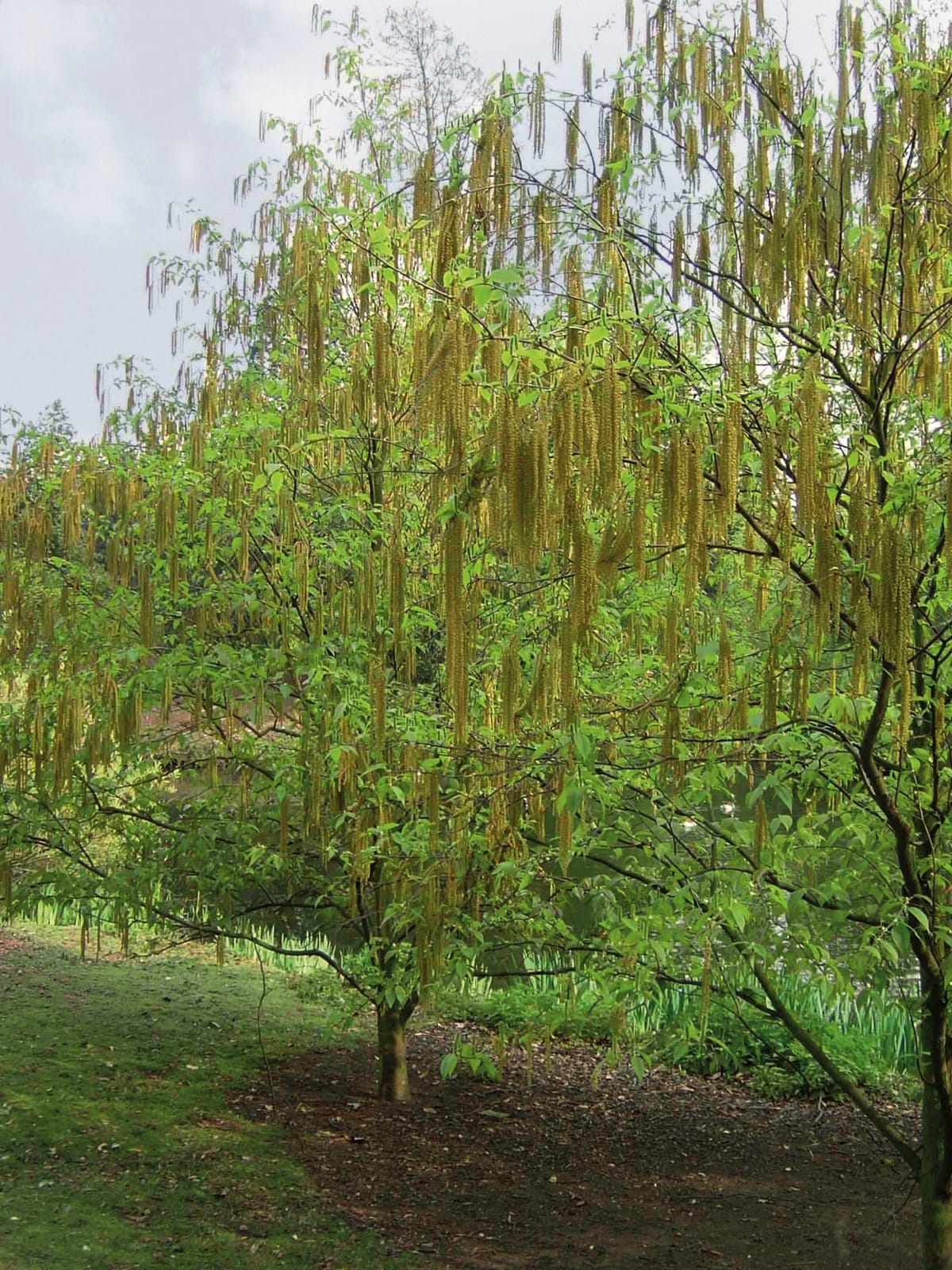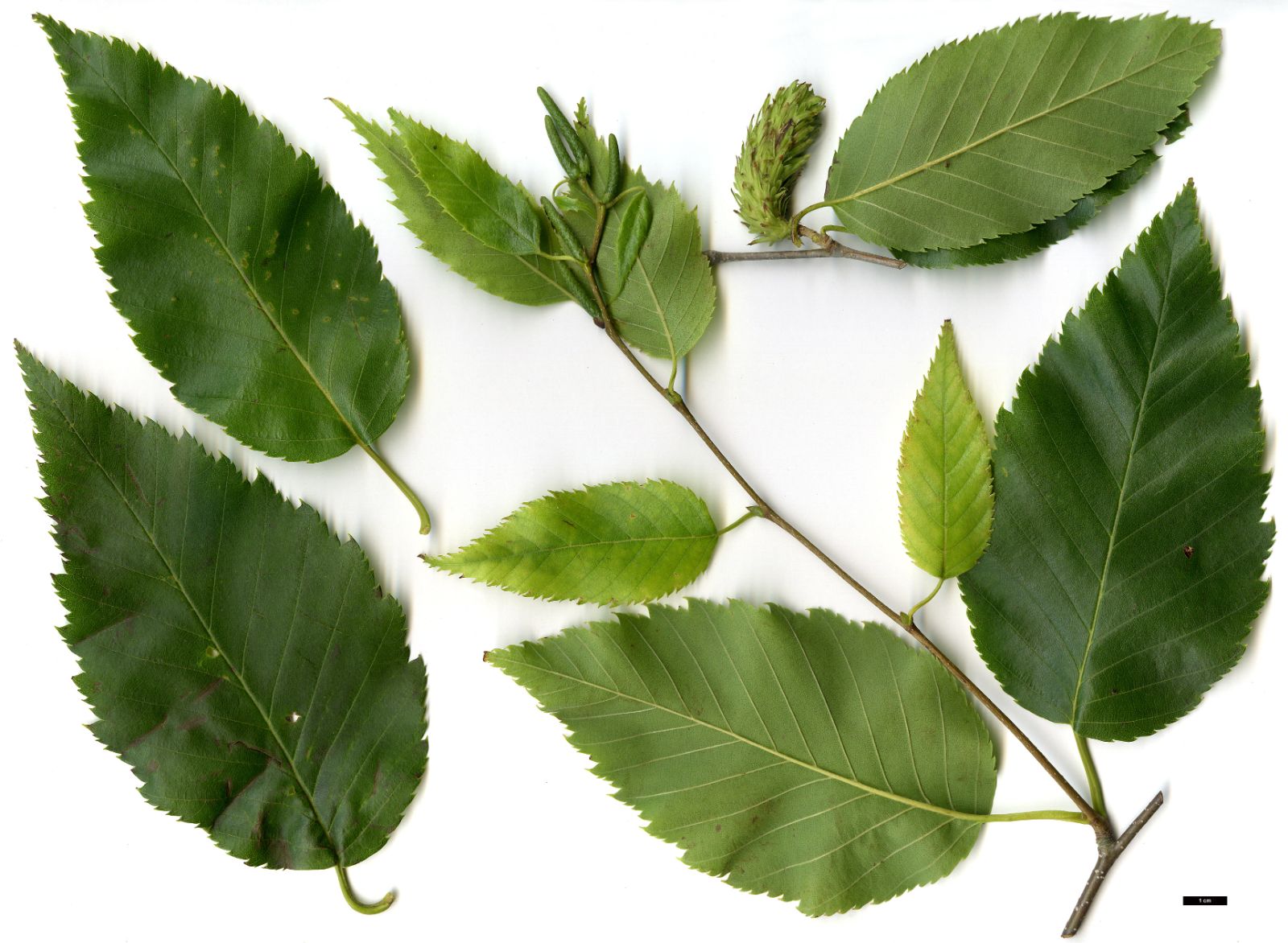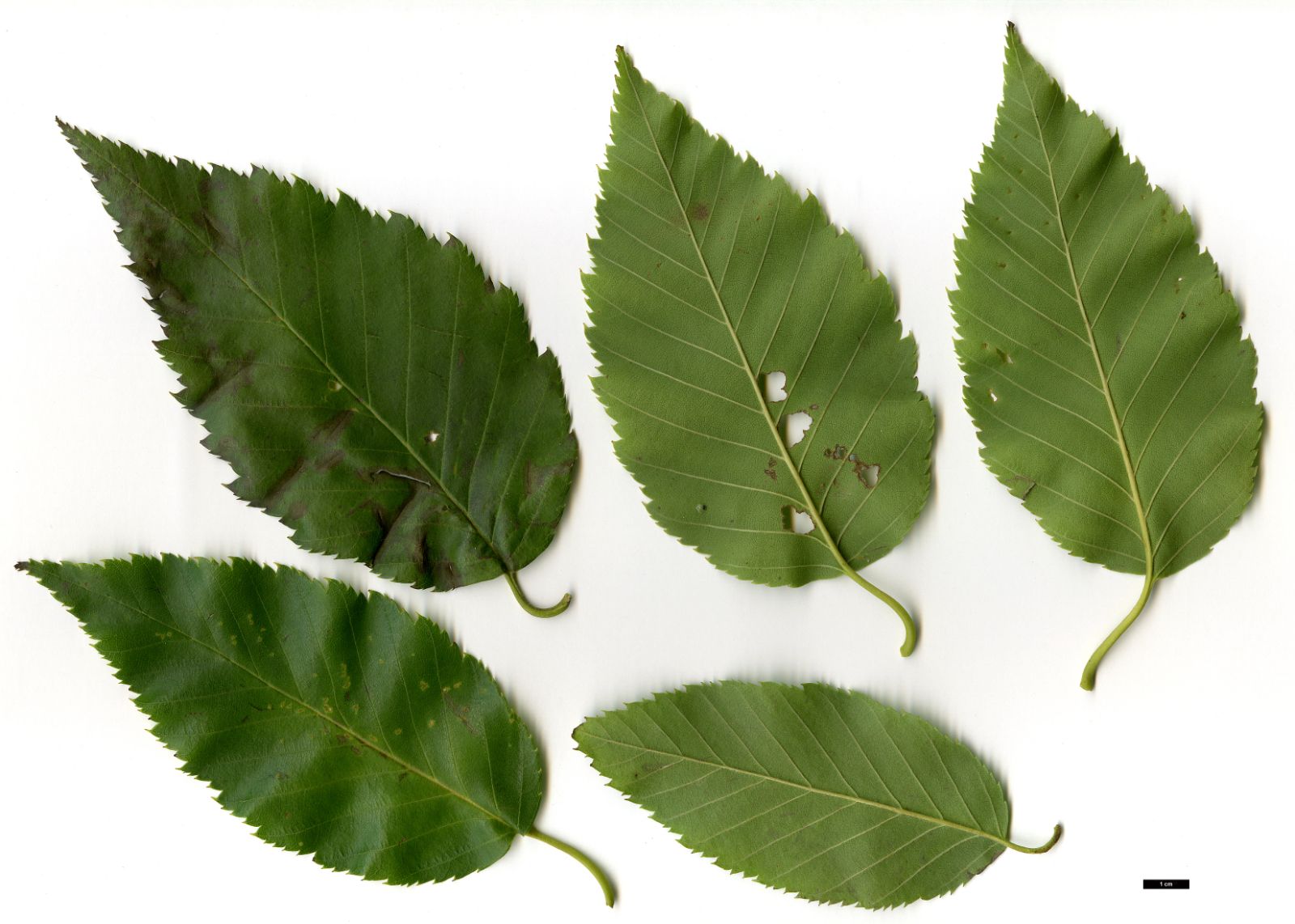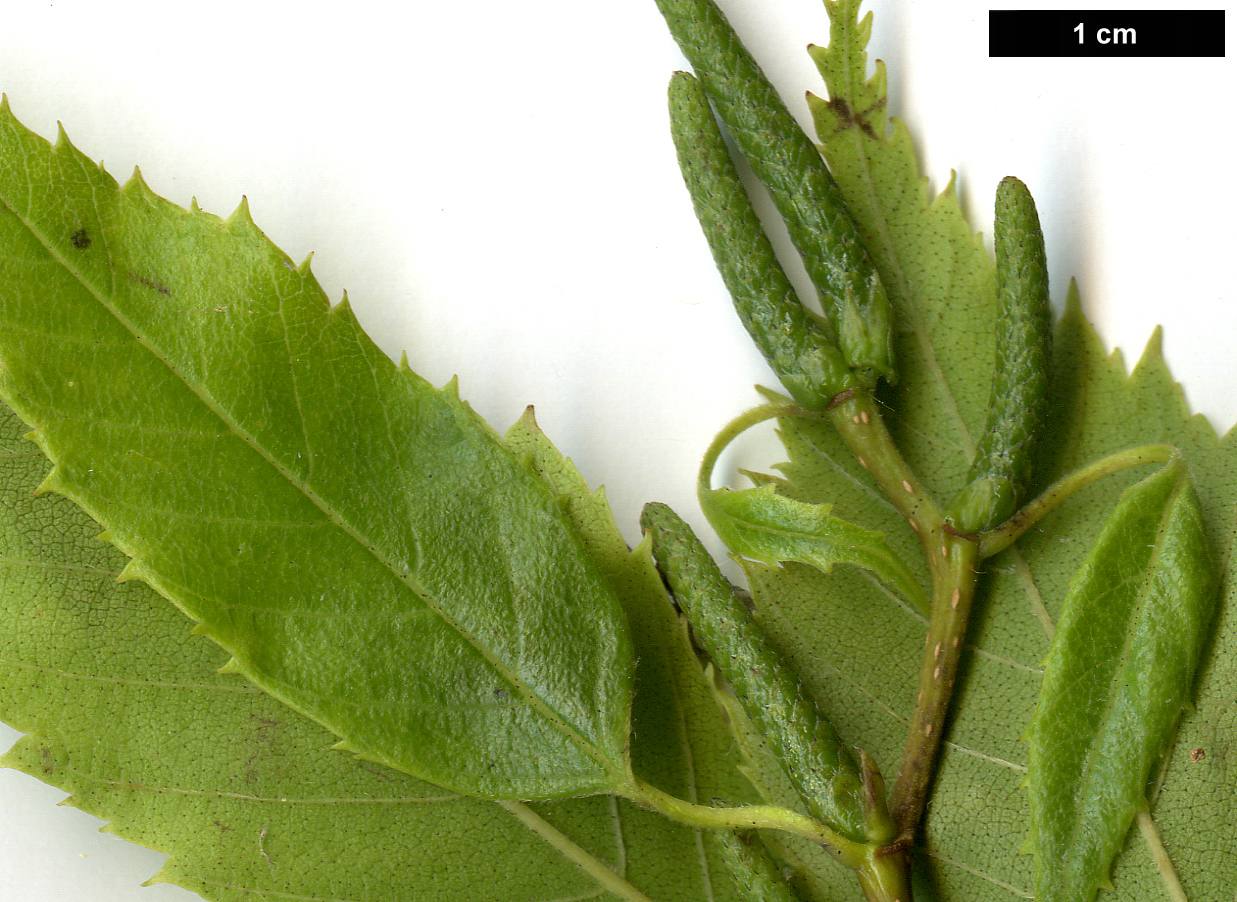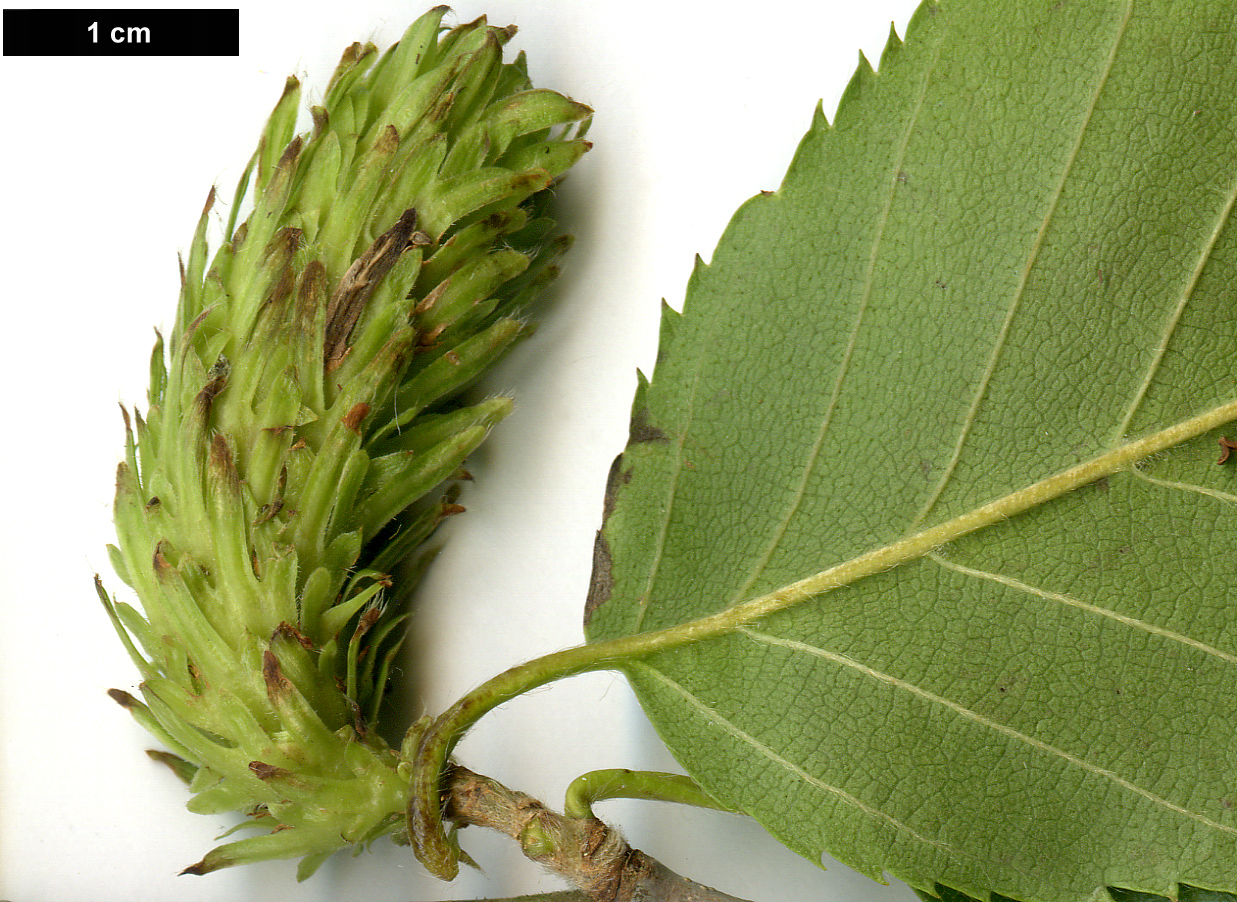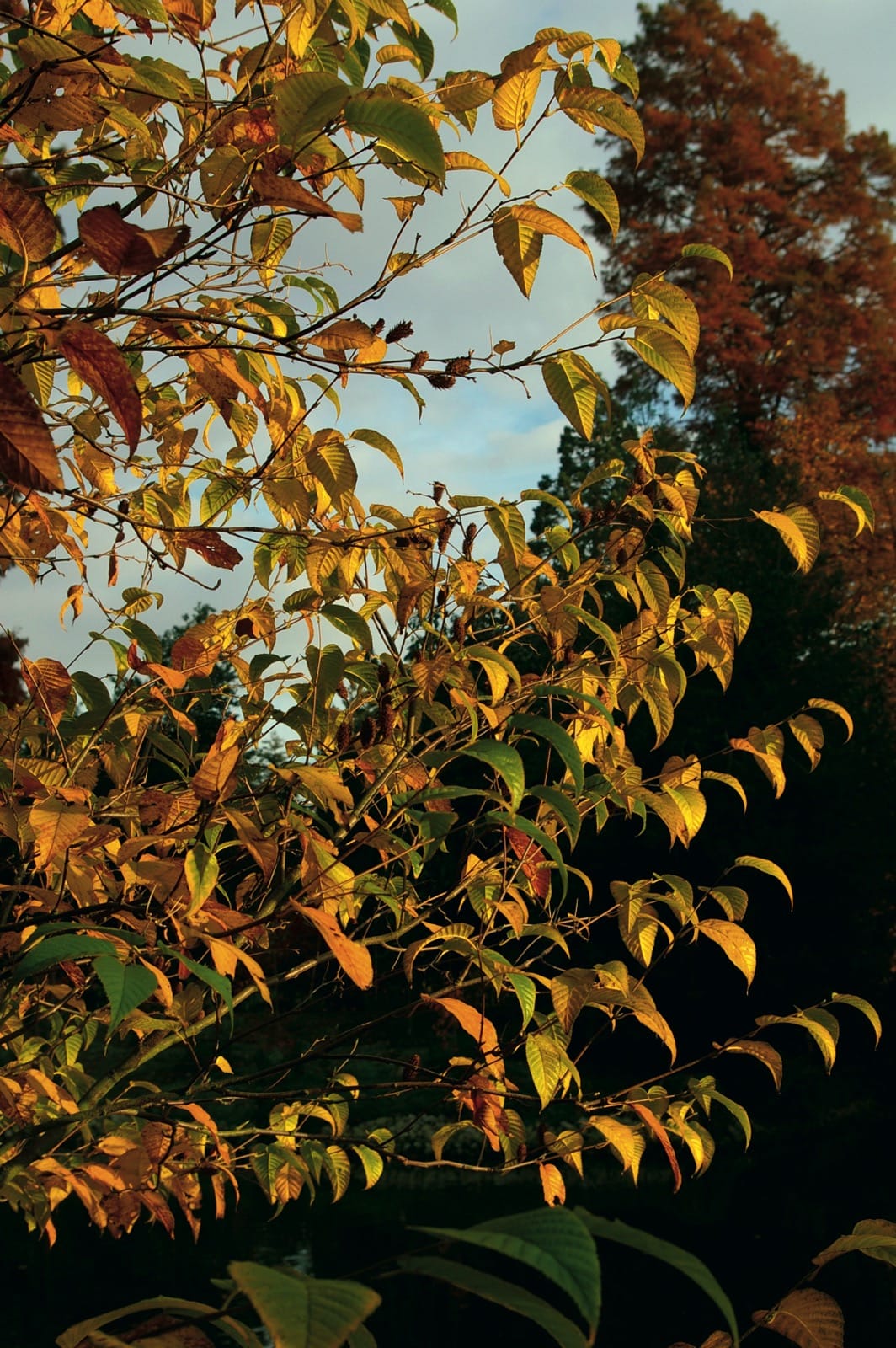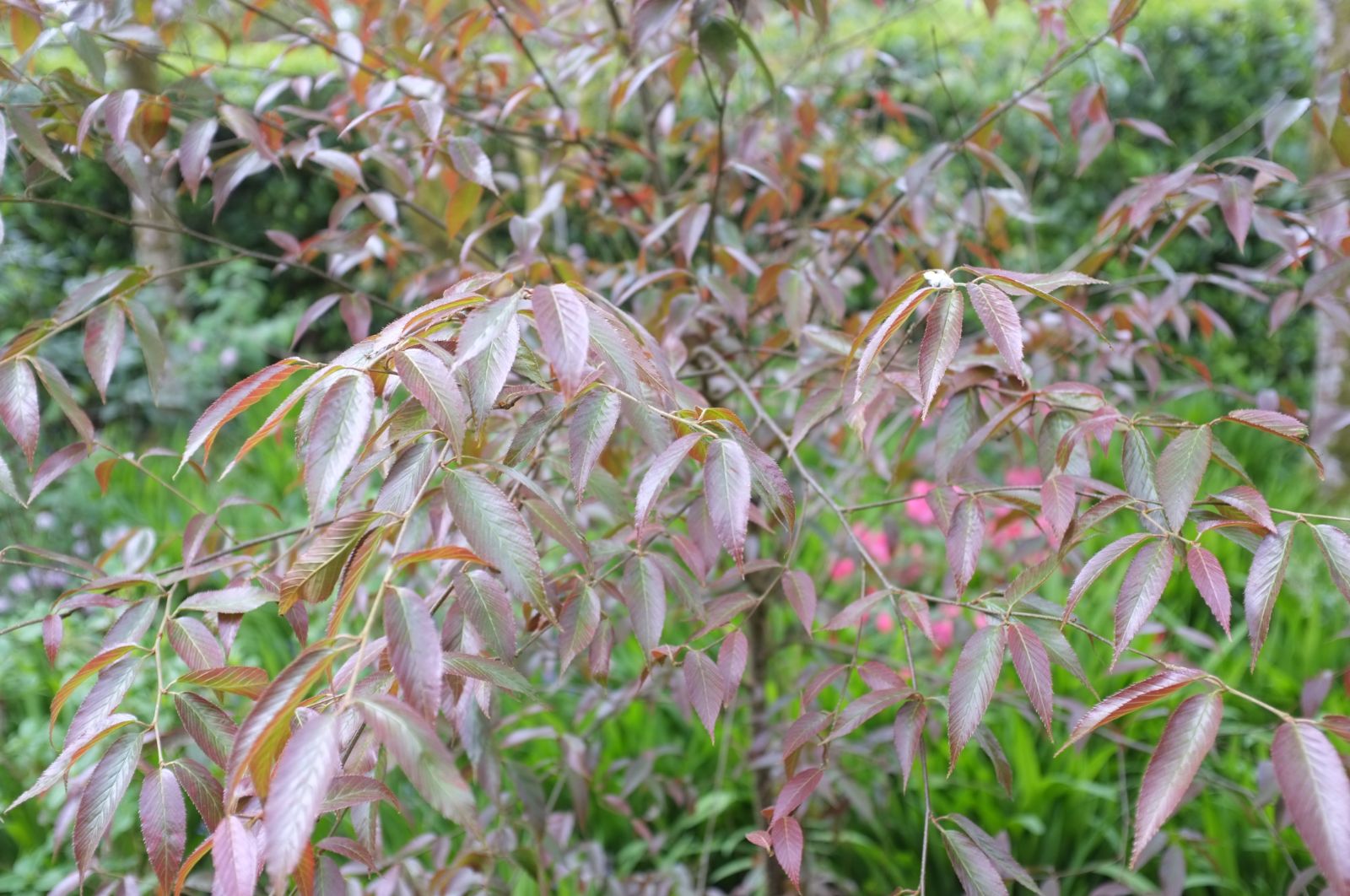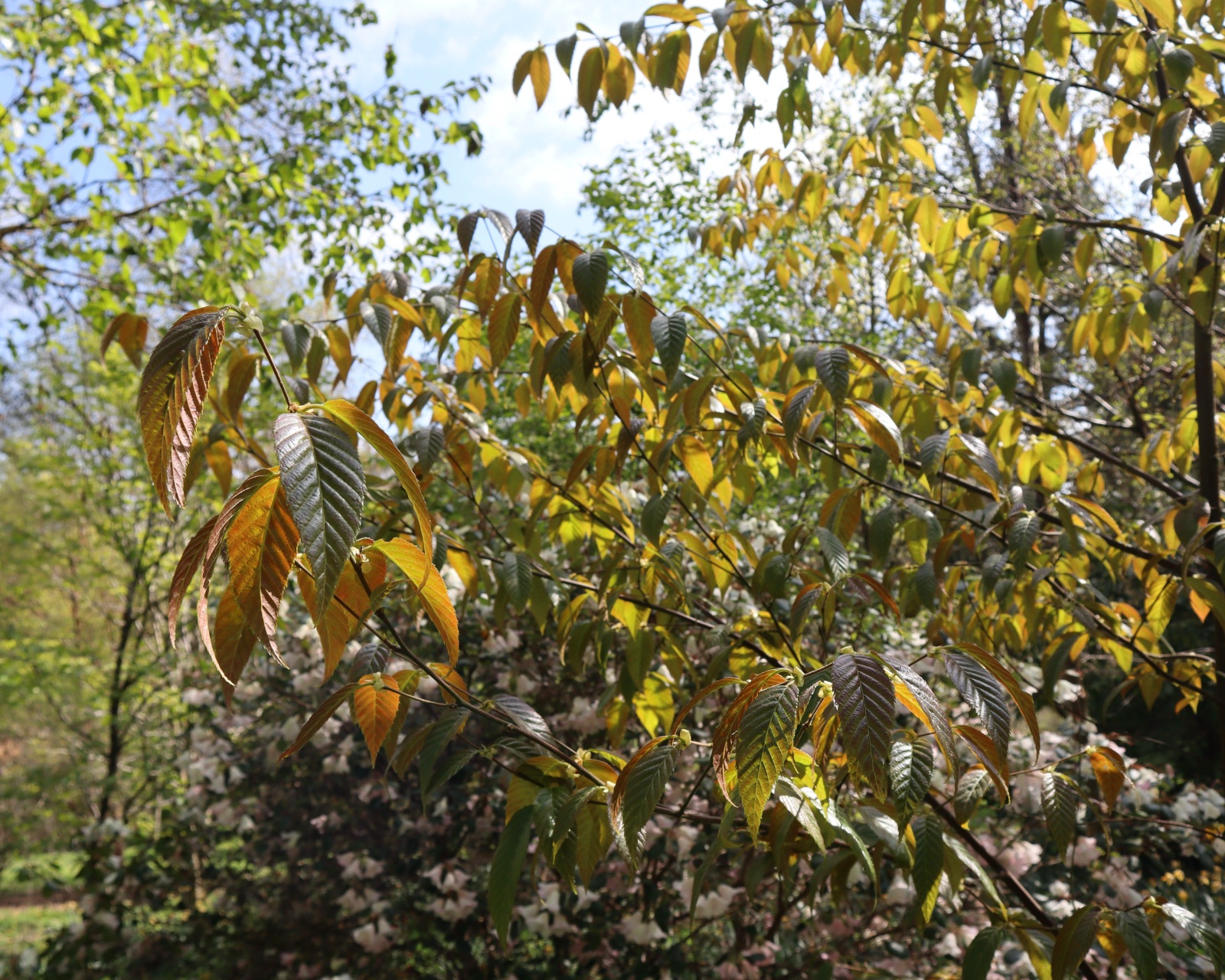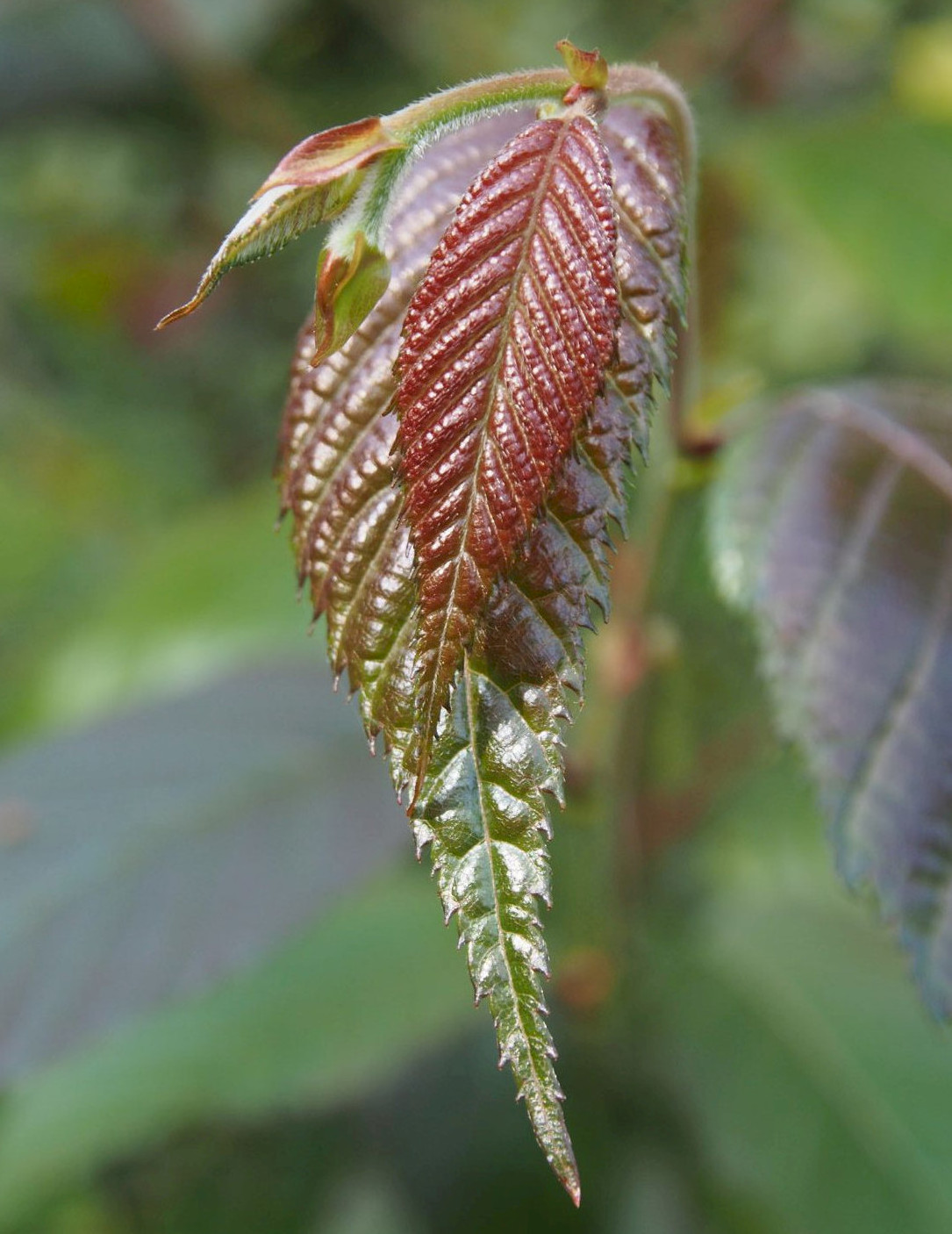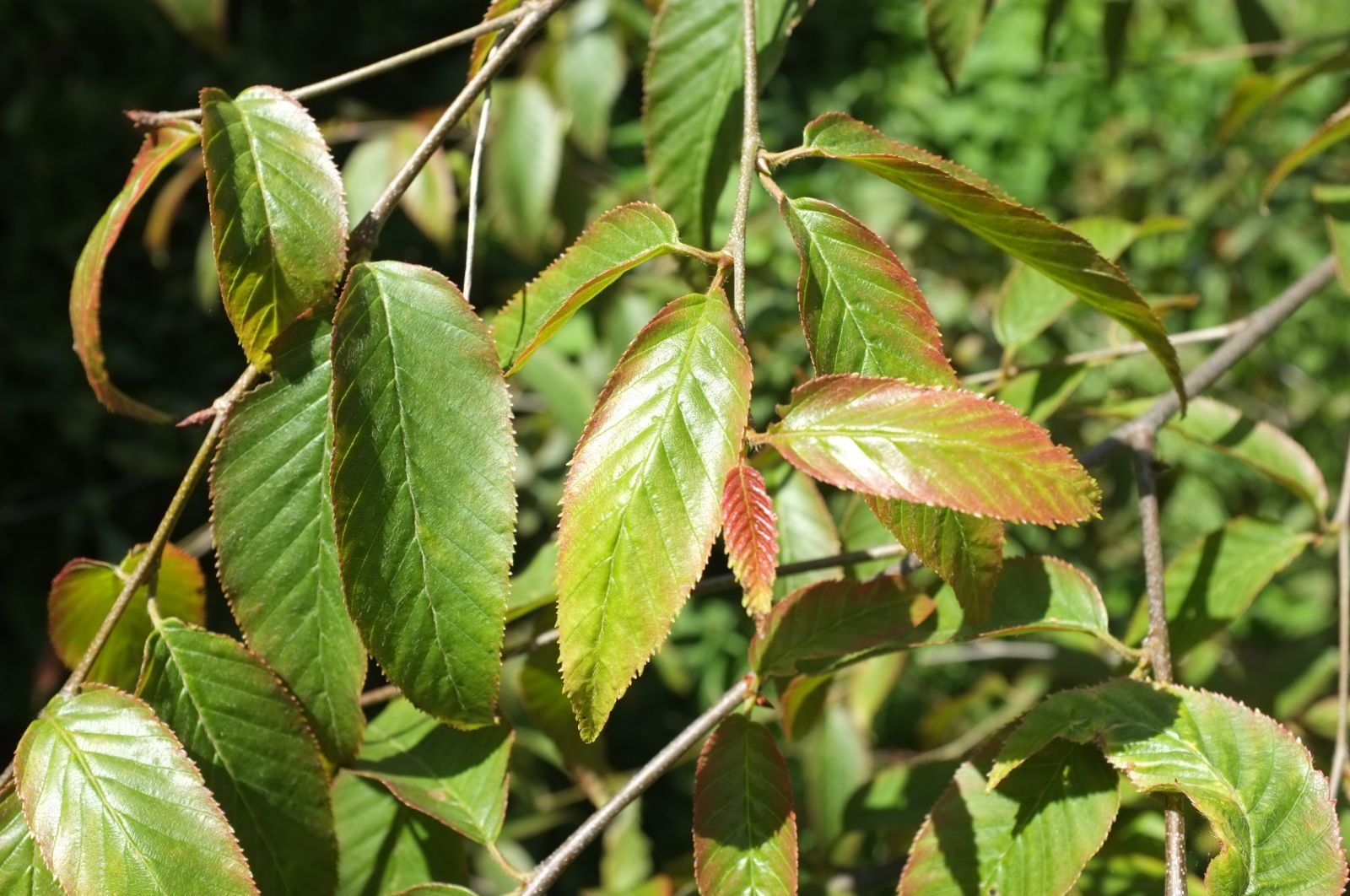Betula insignis
Credits
Article from Bean's Trees and Shrubs Hardy in the British Isles
Article from New Trees by John Grimshaw & Ross Bayton
Recommended citation
'Betula insignis' from the website Trees and Shrubs Online (treesandshrubsonline.
Genus
Other taxa in genus
- Betula albosinensis
- Betula alleghaniensis
- Betula × aurata
- Betula bomiensis
- Betula × caerulea
- Betula chichibuensis
- Betula chinensis
- Betula coerulea-grandis
- Betula cordifolia
- Betula corylifolia
- Betula cylindrostachya
- Betula davurica
- Betula delavayi
- Betula ermanii
- Betula forrestii
- Betula glandulosa
- Betula globispica
- Betula grossa
- Betula humilis
- Betula jacquemontii
- Betula lenta
- Betula luminifera
- Betula lutea
- Betula mandshurica
- Betula maximowicziana
- Betula medwediewii
- Betula nana
- Betula neoalaskana
- Betula nigra
- Betula occidentalis
- Betula papyrifera
- Betula pendula
- Betula platyphylla
- Betula populifolia
- Betula potaninii
- Betula pubescens
- Betula pumila
- Betula raddeana
- Betula schmidtii
- Betula szechuanica
- Betula tianschanica
- Betula × utahensis
- Betula utilis
This species, considered by Schneider to be allied to B. grossa and B. globispica, was described by Franchet from a specimen collected by Père Farges in Hupeh, China. The leading characters appear to be: leaves ovate or ovate-elliptic, to 31⁄2 in. long and 13⁄8 in. wide, acuminate, rounded at the base, finely and regularly toothed, with twelve to fifteen pairs of veins; female catkins unusually large, sometimes over 2 in. long and 5⁄8 in. wide; bracts with narrow acute lobes, the lateral lobes ascending; seeds narrowly winged.
A birch found by Wilson in Hupeh and western Szechwan is thought to belong here. It is, as seen by him, a small tree with a bushy crown and a close, smooth, dark bark. Some of Wilson’s specimens have female catkins shorter and relatively broader than in the type.
Plants under the name B. insignis are now in cultivation.
From New Trees
Betula insignis Franch.
Synonyms: B. austrosinensis Chun ex P.C. Li
Tree to 25 m. Bark greyish black, brown or greyish brown, rough and fissured, fragrant (oil of wintergreen) when rubbed. Branchlets brown, sometimes with dense yellow pubescence when young, or glabrescent, later glabrous, fragrant. Leaves deciduous, aromatic of wintergreen when crushed, (5–)8–13 × (2–)3–6 cm, elliptic or ovate to lanceolate, upper surface with sparse pubescence, lower surface with numerous resin glands, pubescence on the veins and tufts of hair in the vein axils, 12–15 lateral veins on each side of the midvein, margins with sharp double serrations, apex acuminate to caudate; petiole 0.8–2 cm long with a few longitudinal hairs. Monoecious; staminate inflorescences catkin-like, to 25 cm, pale green; pistillate inflorescences catkin-like, erect, short-pedunculate, oblong, 2.5–4 × 1.5– 2 cm. Flowers inconspicuous; bracts conspicuous, pubescent and three-lobed. Fruit a tiny samara with opaque membranous wings. Flowering May to June, fruiting July to August (China). Li & Skvortsov 1999, McAllister 2005b. Distribution CHINA: Guizhou, western Hubei, Sichuan. Habitat Broadleaved forests between 1400 and 3400 m asl. USDA Hardiness Zone 7. Conservation status Not evaluated. Illustration Li & Skvortsov 1999, McAllister 2005b; NT41, NT162, NT164, NT169. Cross-references S113, K226. Taxonomic note Betula austrosinensis is maintained as a separate species by Flora of China, but other authorities include it in B. insignis (Govaerts & Frodin 1998, McAllister 2005b).
Despite having been collected by Wilson in 1900 (Sargent 1916), Betula insignis did not become established in Europe, and was assumed to be somewhat tender. In recent years however this has been demonstrated not to be the case, and the species is now frequent in collections throughout the United Kingdom, forming beautiful trees of 12 m or more (McAllister 2005b). The principal source was the 1985 Fanjin Shan Guizhou Expedition of Simmons, Fliegner and Russell, who collected it at 1200 m (as GUIZ 82). The seeds came from a fallen branch of an invisible tree, proclaimed to be an Alnus by the accompanying Chinese botanist Prof. Huang. It is not known if B. insignis is cultivated in America. Material from northern Vietnam is also grown under the name B. jinpingensis, but this name is a synonym of B. utilis (Li & Skvortsov 1999); the Vietnamese trees may represent a local variant of B. insignis (H. McAllister, pers. comm. 2007). As seen at Tregrehan, where specimens have reached 5 m, the bark is very dark brown, with an attractive pattern of paler lenticels in horizontal rows, and the leaves are also exceptionally dark green, flushing bronze in spring.
Betula insignis is a very handsome tree, with curiously metallic-looking bark, and big leaves that can turn an excellent yellow and russet in autumn. The male catkins are particularly striking, being up to 25 cm long, but the big fruiting catkins are also conspicuous and decorative. Interestingly, it is said to grow best in heavy wet clay (McAllister 2005b), which makes it particularly useful.

